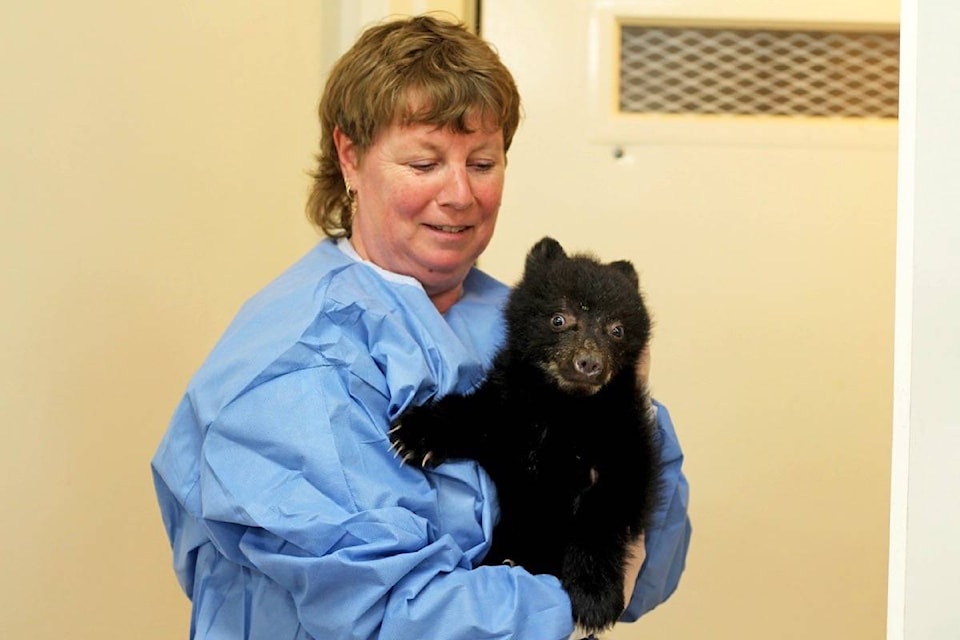Just as a Vancouver Island wildlife recovery centre was preparing to release eight bears into the wild, a new baby bear cub was rescued and brought into the centre.
It was found in Tofino by John Forde and Jennifer Steven late last month, who brought it to the North Island Wildlife Recovery Association near Parksville.
“He was starving when he came in. He was nursing off of his dead mom, so we don’t know how long he’d been doing that for,” said animal care technician Tawny Molland.
“He was pretty tiny when he came here. It took a little bit for him to start trying to take food. We gradually got to the point where he was wanting the food from the syringe and he was trying to do it on his own and we got him to start taking from a bowl and we were spoon feeding him and all of a sudden he just took to the bowl and now he’s eating on his own.”
Forde and Steven, wildlife watching guides from Tofino, found the baby bear refusing to leave its mother’s side. The couple told Black Press Media they had received a report of a bear cub hanging around a deceased adult bear.
After a failed attempt at rescuing the bear the first day, Forde and Steven returned the following morning and managed to rescue the bear.
RELATED:
Molland said it was “absolutely amazing” that Forde was able to get the bear. She said it could have gone very differently if Forde and Steven had been a few days later to rescue the bear.
“He can’t survive on his own. If it wasn’t for John Forde finding him and actually being able to rescue him, he never would have survived. It was huge that he got him here.”
Although the bear has been at the centre for about two weeks, Molland said, it will be a while yet before he’s released.
“He’ll be in here for a while and then we’ll move him into a bigger enclosure,” she said. “Then we’ll just gradually keep building up his appetite, switching over from liquid foods to solid food. He’ll be here for a while yet. He’ll probably be here for 15 to 18 months.”
After a while, she said, there will be “less and less people; less and less contact because we want him to be a wild bear because we do want him to be released back into the wild.”
NIWRA is no stranger to rehabilitating bears to release them back into the wild. There are currently eight other bears in the pre-release enclosure.
“What we’re waiting for right now is just the perfect conditions for them to be released back into the wild. Hopefully in the next few months they will be released,” Molland said.
The perfect conditions, she said, include the availability of food sources such as the salmon run and berries to get the bears ready for the winter months.
But when it comes time to release the bears, Molland said, it will be up to the conservation officers as to where the bears will go.
While eight bears in pre-release may sound like a large number, NIWRA co-founder Robin Campbell said the centre has previously held as many as 19 bears at one time. He said it was hard rotating the bears through the different enclosures.
From that point, he said, the centre had to figure out the maximum number of bears it could keep at one time. He said the pre-release enclosure doesn’t really count, so the centre is able to take more bears into nursing, if needed.
“With bears, they start fighting and then all of a sudden it gets more serious and then they turn themselves into wild bears,” he said. “It’s amazing to watch them grow from something like that.”
Campbell said while it’s worth it to help the bears, it can be expensive. It costs roughly $40 per day to look after one bear.
Molland said the centre is always relying on donations of food such as dog food and lots of fruits.
Send story tips: lauren.collins@pqbnews.com



